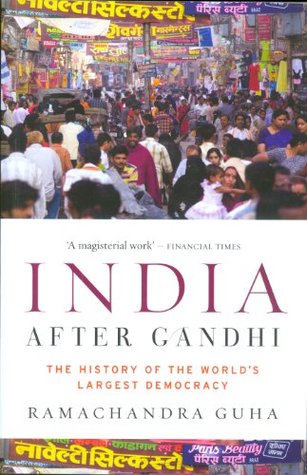More on this book
Community
Kindle Notes & Highlights
Read between
May 9, 2015 - January 9, 2019
the puzzle that has for so long confronted scholar and citizen, foreigner as well as native – namely, why is there an India at all?
‘The number and kinds of people I’ve seen,’ wrote Albert Mayer, ‘their ability, outlook, energy, and devotion; the tingling atmosphere of plans and expectation and uncertainty; and yet the calm and self-possession – what it adds up to is being present at the birth of a nation.’
Now largely forgotten, the Bombay Plan gives the lie to the claim that Jawaharlal Nehru imposed a model of centralized economic development on an unwilling capitalist class. One wonders what free-market pundits would make of it now. They would probably see it as a dirigiste tract, unworthy of capitalism and capitalists. In truth, it should be seen simply as symptomatic of the Zeitgeist, of the spirit of the times.12 That spirit was all in favour of centralized planning, of the state occupying what was called the ‘commanding heights’ of the economy.
‘people eating, people washing, people sleeping. People visiting, people arguing and screaming. People thrusting their hands through the taxi window, begging. People defecating and urinating. People clinging to buses. People herding animals. People. People. People.’
an anonymous democrat was able to place an ad in the Times of India announcing the ‘death of D. E. M. O’Cracy, mourned by his wife T. Ruth, his son L. I. Bertie, and his daughters Faith, Hope, and Justice’.25
Is India a democracy, then? The answer is well, phipty-phipty.
As a modern nation, India is simply sui generis. It stands on its own, different and distinct from the alternative political models on offer – be these Anglo-Saxon liberalism, French republicanism, atheistic communism, or Islamic theocracy.


